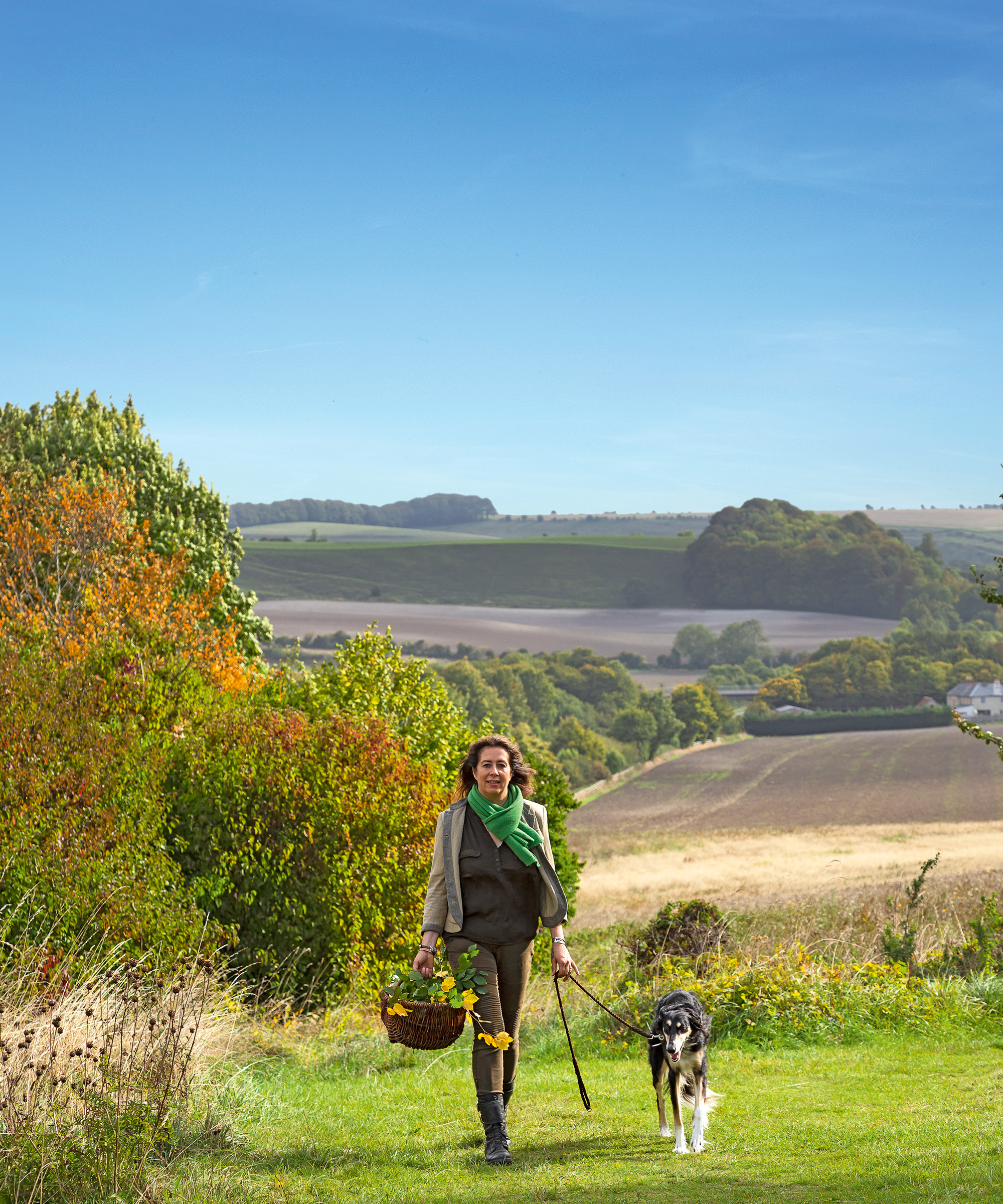Walking for fitness – 5 ways this simple exercise routine can transform your body
Walking holds the key to your New Year fitness resolutions…


During exercise, you’re forced to be present and in the zone. With the recent situation, understandably, you may not be able to concentrate whilst the daily updates of the news interrupts your day-to-day routines. However, it’s time to focus on you.
Adding walking into your daily fitness routine is a huge benefit right now. Not only will it help you physically, but it will also support you mentally.
Walking is the perfect way to increase your fitness level, develop a toned, svelte physique, increase power, strength, endurance as well as shed those unwanted pounds.
Find out how to reach your fitness goals with the best walking for fitness advice below.
1. Correct your posture and tune your technique

Want to turn your usual amble into a supercharged body-firming workout? Then you need to have a little look at your technique.
Before you move anywhere – stand tall with a good posture, and engage your abs by pulling your navel in towards your spine – this will help you to stay active throughout your walk.
- Bring your arms into their walking position; elbows bent at 90 degrees and hands lightly cupped – not clenched.
- Check your shoulders are as relaxed as can be.
- Start walking leading with your heel, making sure it hits the ground first before rolling through the rest of the foot.
- Swing your arms with intent, in opposition as you walk, making sure at the highest point your hand is no higher than your chin.
The benefits: These simple tweaks to your technique will ensure maximum all-over firming. Your new powered walk will also burn extra fat and calories.
Design expertise in your inbox – from inspiring decorating ideas and beautiful celebrity homes to practical gardening advice and shopping round-ups.
2. Carry a weight
As inconvenient as it may seem, carrying something with you on your walk is going to make you work harder, resulting in even more benefits – wonderful.
- A backpack – A great option as you can load it up as much as you would like. Make sure it fits well and is comfortable before you set off.
- Weighted vest – These are available to buy and do a similar job to a backpack, except they evenly distribute weight throughout the torso.
- Hand weights – You can easily improvise with bottles of water here; adjust the weight by changing the water level. It is recommended to opt for no more than 1lb in each hand.
- Walking poles – Easily available and great for working the upper body whilst you walk, increasing the overall intensity of your workout.
The benefits: Hand weights or poles bring increased upper body toning to your walk whereas the backpack or weighted vest bring extra work to the legs and bottom. All of these are going to add a bit more effort to your session resulting in burning more calories and fat and increasing cardiovascular fitness.
3. Make the most of your environment

Think of this one as a challenging break from the norm – with a view.
Start with a recce of your local area; make a list of all the hills and then begin with one that seems manageable in distance and gradient for your first attempt.
Either a shorter distance hill, ascending and descending multiple times during your workout, or climb and descend a larger hill as your complete session.
The benefits: This will help to tone the muscles in your legs and rear. It is also a great challenge for the cardiovascular system – burning an extra 3-5 calories per minute than when walking on a flat terrain.
4. Combine walking with running
If walking is proving a little too dull, then try mixing it up with running, jogging or HIIT/interval training.
High Intensity Training (HIIT) is a short-burst, intense workout that usually lasts no longer than 20-30 minutes, but if you are new to this style of training, it is best to stick to no more than 10 minutes.
We recommend using a combination of jogging on the spot, lunges, squats, push-ups and planks. Not for the faint hearted, this type of exercise is known to burn up to 30 per cent more calories than any other type of exercise. Start with 1 minute at a time, then gradually increase the ratio of running to walking.
The benefits: These short bursts of activity will boost your heart rate and metabolism in a way that walking alone won’t. Simply put, your heart will work harder and you will use more energy.
5. Finish with a stretch
‘When you’ve worked hard, stretches will help to ease out your muscles, but they also have toning benefits too,’ advises Lucy Knight, a fitness consultant, professionally trained dancer and author of Walking for Weight Loss.
She suggests the following stretches:
Lunges – This stretch is good option for stretching out the hip flexors and the thighs, as well as toning the legs and rear.
- Start standing with your feet together.
- Slowly slide your right leg back bending your left knee into a lunge. Make sure your left knee stays over the ankle and ease your hips towards the floor.
- When you are at your lowest point slowly slide the right leg back in.
- Repeat 5 times each leg.
Wide squats – This is perfect for stretching out the inner thigh muscles as well as toning the legs and rear.
- Start standing with your legs wider than hip distance and turned out.
- Bend your knees until they are at 90 degrees then slowly straighten again squeezing your glutes on the way back up.
Down dog to plank – This is great for stretching backs of the legs, chest and shoulders. It may also tone the upper body and strengthen the core.
- Start on your hands and knees, spine neutral.
- Push up onto the balls of your feet and extend your legs coming to an upside down V-shape.
- Try and push your hands into the floor feeling a stretch up the backs of the legs.
- Now keep the legs straight, lower your hips down until you are in a press up position – you may need to adjust your hands here – and check your spine is neutral and abs pulled in.
- Push back to your upside down V-position
- Repeat the sequence 5 times.
Cobra – This is works wonderfully for stretching the front of the body, toning core muscles and mobilising the spine.
- Start by lying on your front with your legs wider than hip distance, and your forearms on the floor with your hands at shoulder height.
- Draw your abs away from the mat and keep them engaged throughout the exercise.
- Leading with the head, lift it away from the mat followed sequentially by the upper back.
- Don’t take the movement too high – keep your lower rib and forearms in contact with the floor and then roll slowly back down to your starting position.
- Repeat this sequence 5 times.
The benefits: It is vital to cool down after you exercise. Stretching after a workout helps to avoid tired, stiff and sore muscles by helping the blood flow back into your muscles at a more regulated pace, allowing your heart rate to come back to normal.
Is a long walk a good workout?

Walking is a vigorous yet well-rounded fitness activity that will significantly speed up metabolism and boost calorie-burning potential... what could possibly be better than that?
Can you get fit just by walking?
Walking for fitness is often recommended by doctors, nutritionists and personal trainers. However, it is always best to combine walking with a balanced diet to boost overall health, as walking alone is not enough to maintain your health.
Can you lose belly fat by walking?

While fat is usually associated with diet, by applying a few simple tweaks to your normal walking style – using varied paced sessions and some of nature’s obstacles –you will add a real fitness boost to your workout, which may help you lose belly fat in combination with a balanced diet.
'Don’t expect results overnight,' says fitness influencer Ellie Hoad. 'Progress takes time and you need to be consistent with what you’re doing. When you feel like giving up, that’s when you need to keep going.'

Jennifer is the Digital Editor at Homes & Gardens, bringing years of interiors experience across the US and UK. She has worked with leading publications, blending expertise in PR, marketing, social media, commercial strategy, and e-commerce. Jennifer has covered every corner of the home – curating projects from top interior designers, sourcing celebrity properties, reviewing appliances, and delivering timely news. Now, she channels her digital skills into shaping the world’s leading interiors website.
-
 Beauty Doesn’t Have to Be Expensive – And Surviving LA’s Wildfires Has Shown Us What Truly Matters in a Home and Its Decor
Beauty Doesn’t Have to Be Expensive – And Surviving LA’s Wildfires Has Shown Us What Truly Matters in a Home and Its DecorIt was a terrible start to the year, but a challenging time that made us swing into action, and taught about what makes a house a home
-
 This Vintage Pool Table in Jennifer Aniston’s Home Might Just Convert You to Second-Hand Furniture
This Vintage Pool Table in Jennifer Aniston’s Home Might Just Convert You to Second-Hand FurnitureJennifer Aniston makes the case for second-hand shopping with her eBay pool table, which is the perfect touch of vintage amid her modern, contemporary space